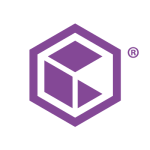What is our primary use case?
I am a Teradata administrator as well as a developer. I have about 700 users who are using our system, and we are maintaining the system in terms of tuning and in terms of all end-to-end items above the Teradata system.
We are using it as a data warehouse. In the data warehouse, we have got so many users who are doing their reporting and different types of analytics work using the solution.
What is most valuable?
Teradata's pretty fast. That is one very important aspect of the solution.
There are other tools, like Viewpoint, in Teradata, which is a monitoring tool.
The integration is pretty easy here in Teradata.
It can scale.
We have found the solution to be stable.
What needs improvement?
The market is enhancing, and every day, BigQuery, Snowflake, Redshift, and all these competitors are moving very, very fast. They're bringing out many new features. For example, Snowflake now has Time Travel and cloning and all these very interesting features. Teradata is an old data warehouse, and they're not improving in terms of new, innovative features. Basically, they're pretty much consistent and unchanging. They're not bringing new features. I've been working with it for eight years, and I have not seen so many new features. Maybe there have been only one or two in the last eight years. Innovation is something that is a bit slow with respect to Teradata. Other competitors are better in terms of new innovations. I'd like to see Teradata add features like cloning or time travel.
There is a query tool. However, we need to install the tool in order to fetch records. With other data warehouses, they have a web-based tool that allows for queries without having to download.
The initial setup is not too easy.
When we want to scale, we need to go to Teradata to initiate the process.
For how long have I used the solution?
I've been using the solution for around eight years.
What do I think about the stability of the solution?
The solution is stable and reliable. I'd rate it nine out of ten. There are no bugs or glitches, and it doesn't crash or freeze.
What do I think about the scalability of the solution?
While the solution is scalable, and you can add new nodes if you want to, it's not instantaneous. We need to reach out to Teradata and they will handle the changes we require. Scaling is a process.
How are customer service and support?
Technical support has been very good. We have been pleased with the level of attention we receive.
How would you rate customer service and support?
Which solution did I use previously and why did I switch?
I also use BigQuery and Snowflake. They are more complex, and therefore, it can be harder to integrate using them.
Teradata is a better monitoring tool, and it offers better performance with respect to bigger data queries. However, it continues to lack innovation.
How was the initial setup?
The solution is not straightforward to set up. For example, if I target the users, the users need to install things and set up things up. Even the LDAP integration and all those things are not easy with respect to Teradata if I compare it with BigQuery, Snowflake, and Redshift.
If I want to spin off a new node or anything like that with Teradata, it's a bit tricky compared to other data warehouses where we can easily spin off new nodes and work on them.
Since our system is like a fixed system, when we did this deployment, it didn't take that much time. However, it was not easy. If I wanted to add additional load into the system, I needed to hand over the Teradata system to Teradata, and they had to do it, and that would take a day to do. Now, if I compare it with BigQuery or Snowflake, I can spin off new clusters without any issues. I can just add the number of nodes in that new warehouse, and I can run it.
How long it takes to deploy depends on how big the system is. That said, compared to others, it definitely takes a little bit of extra time.
Since Teradata takes care of the implementation, I'm not sure how many people are ultimately involved in the deployment. From our side, we had two or three people involved in the setup.
We have five to six admins to manage a 24/7 project.
What about the implementation team?
Teradata handled a lot fo the implementation for us.
What's my experience with pricing, setup cost, and licensing?
I'm not overly aware of pricing. That said, my understanding is that it is reasonable. While it has a bit of an edge in pricing, everyone is relatively close in pricing.
What other advice do I have?
I'm a customer.
I'd advise potential users to do a proper POC first.
Teradata is beneficial when we have a huge amount of data, and queries are complex. It works well with small queries as well. However, companies won't benefit that much from Teradata if they are only focused on small queries.
I'd rate the solution eight out of ten. If they were more innovative, I would rate them higher.
Which deployment model are you using for this solution?
Private Cloud
Disclosure: My company does not have a business relationship with this vendor other than being a customer.

















